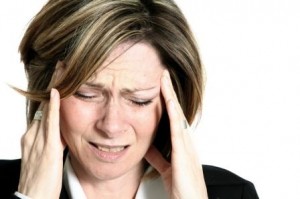Cluster Headache Cure by Dr. Shevel
[media url=”http://www.youtube.com/watch?v=FnIxSrFeB7M” width=”600″ height=”400″]Learn other courses related to first aid and understand more about this topic.
A cluster headache characterized by an extremely intense headache, which starts around a single eye area and radiates to nearby regions of the face. Each headache may last from 30 minutes to three hours. Headaches may occur several times a day and can happen daily, lasting for several weeks and even months.
Usually cluster headaches take place during the night time and are more common in men than in women.
Some people have discovered that certain triggers such as the following may bring rise to a cluster headache:
- Alcohol
- Tobacco products
- Foods consisting of high nitrite levels such as bacon
- Bright lights
- Hot showers, hot baths and hot weathers
On an average, people with cluster headaches will most probably experience up to three episodes on a daily basis, for four to eight weeks. However, once the episodes of headaches have ended, the person may not have another headache for months or even years
The exact cause of cluster headaches is still not known. However, it may be associated with the temporary imbalance of the chemicals in the brain.

Signs and symptoms of cluster headaches may include:
- Intense localized pain around one eye or the temple
- Pain is intense and deep and flares up within five minutes
- Pain may radiate to nearby areas such as the cheek or jaw
- The eye on the affected sight may become bloodshot or teary
- The side of the nose on the affected side is runny
- The eye on the affected side may have a droopy eyelid or a smaller pupil
In most cases, people feel a lot better when they engage themselves in activity, which is unlikely the case in people with migraine headaches, who prefer a dark, quiet room.
When to seek medical help
See your doctor if cluster headaches are frequent and interfere with your daily activities.
Treatment
It may be difficult to treat the pain during the first headache in a cluster. This is because the pain goes away by the time you see your doctor.
If the problem is diagnosed, your health care provider may prescribe appropriate treatment to control your headaches.
You may be directed to inhale 100% oxygen through a mask for 15 minutes. If done during the first signs of the headache, it is usually an effective treatment. The oxygen can be prescribed by your doctor.
There may be certain drugs that can be used during the beginning of the cluster headache. Drugs prescribed by your doctor may include Triptans, Intranasal lidocaine and intranasal dihydroergotamine.
You can have triptans in conjunction with the oxygen therapy to make them more effective. Bear in mind that a triptain should not be combined with a dihydroergotamine.
Additional medications may be prescribed to reduce the frequency of upcoming headaches and shorten an active cluster period. Try not to get discouraged if the first round of treatment is ineffective because your doctor has to try different therapies to determine which one is most suitable for you.
Neurosurgery is rarely required for headaches that do not respond to medical treatment. Attend a first aid refresher course.